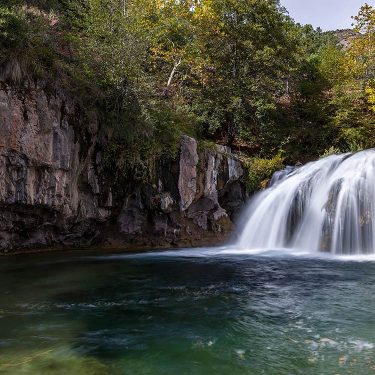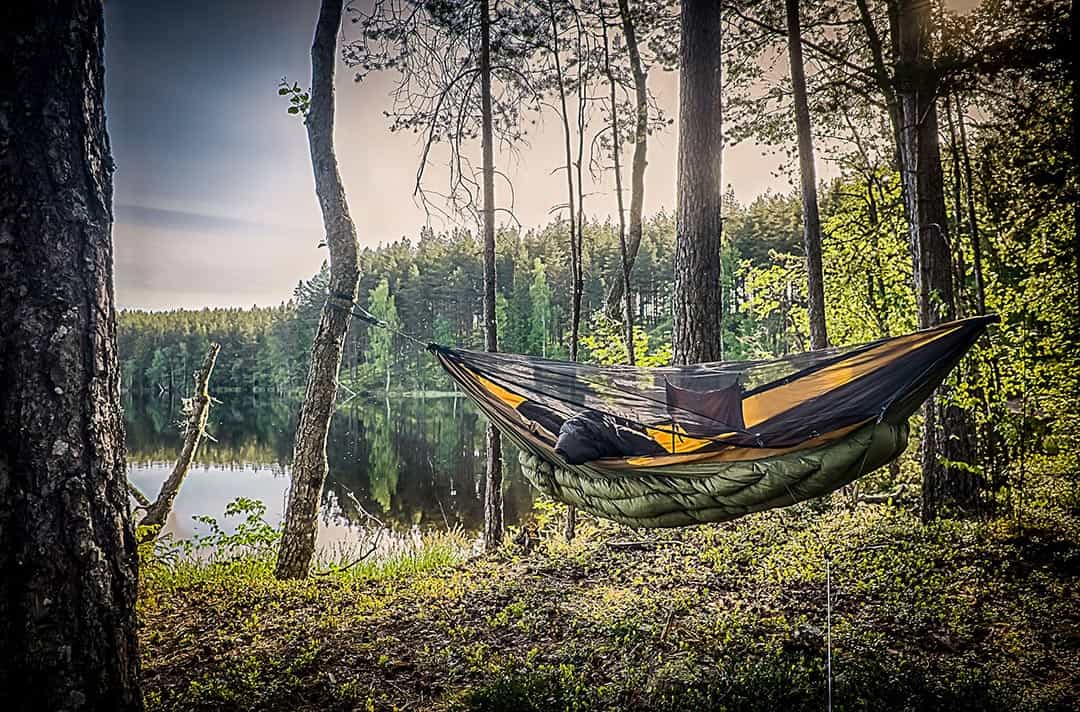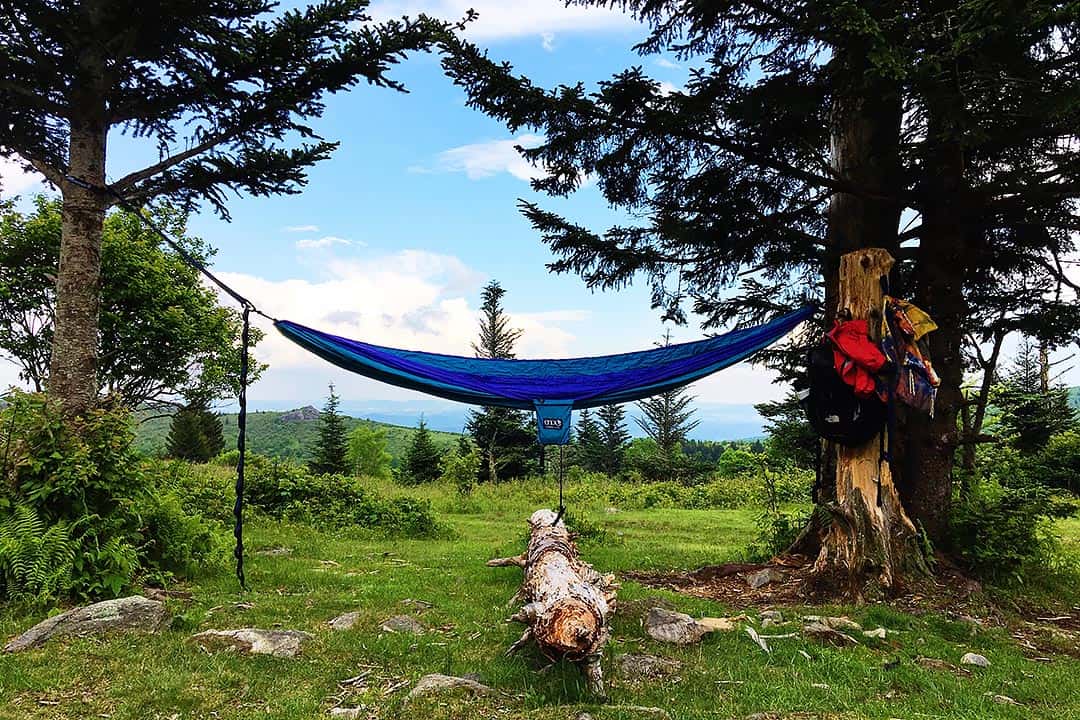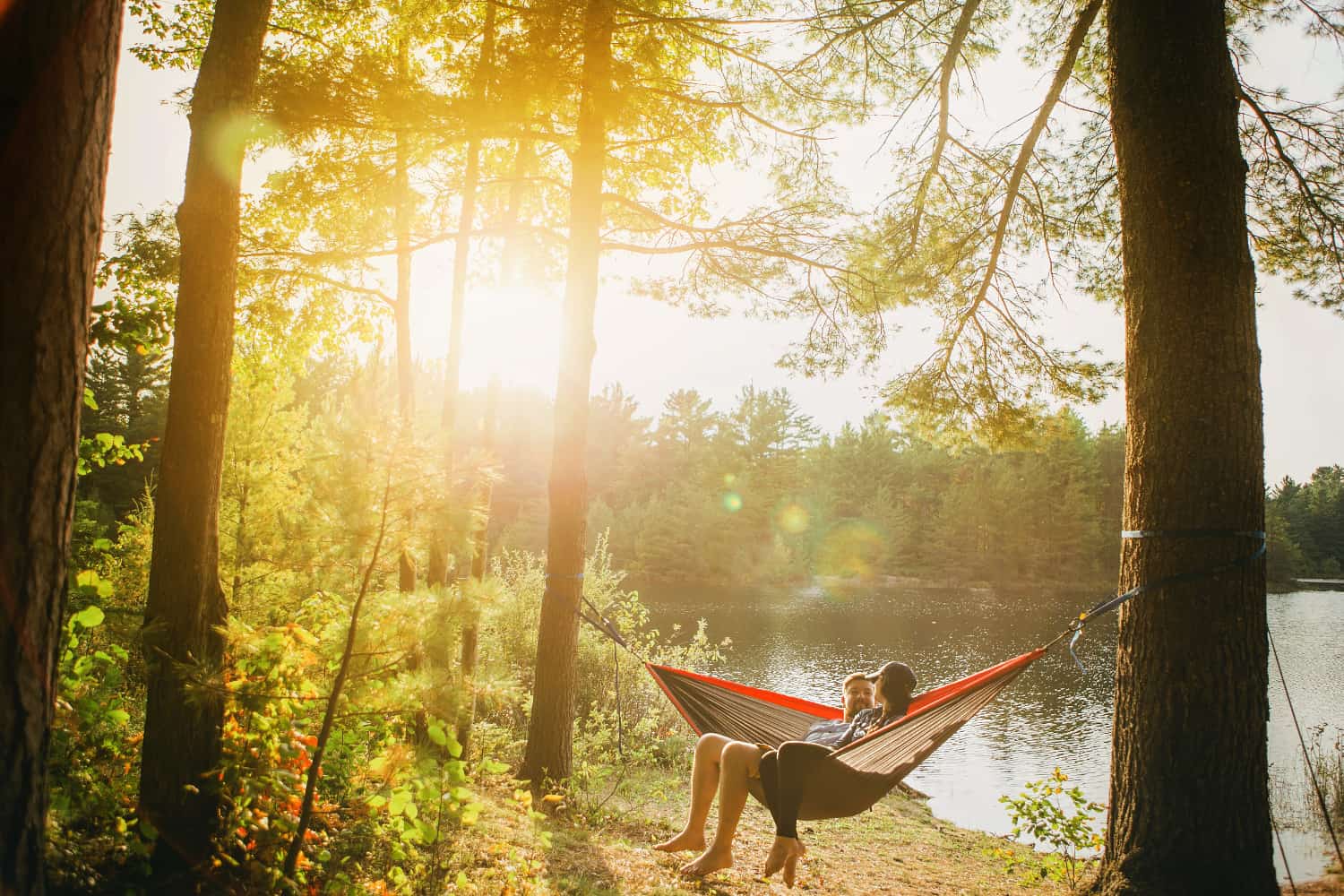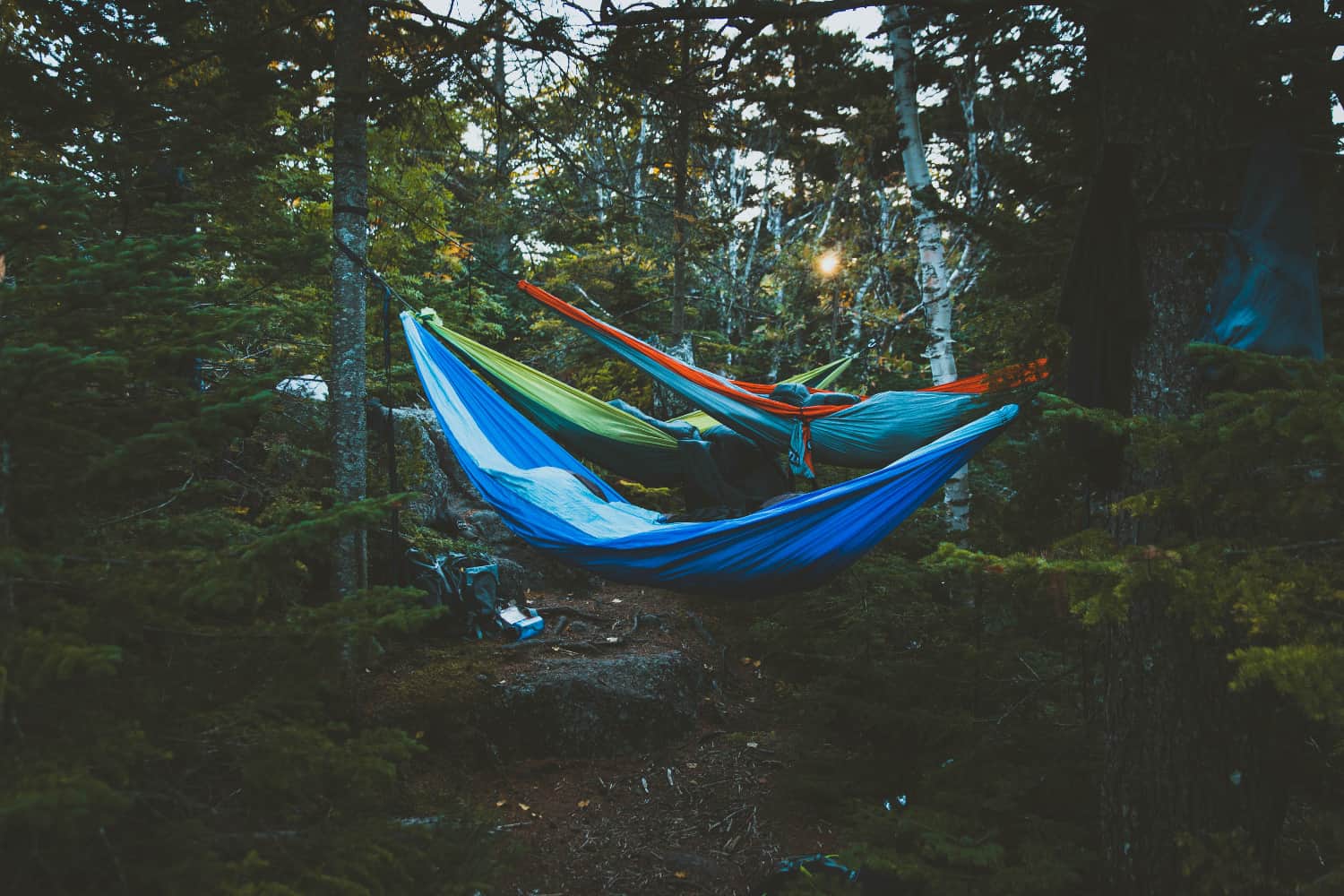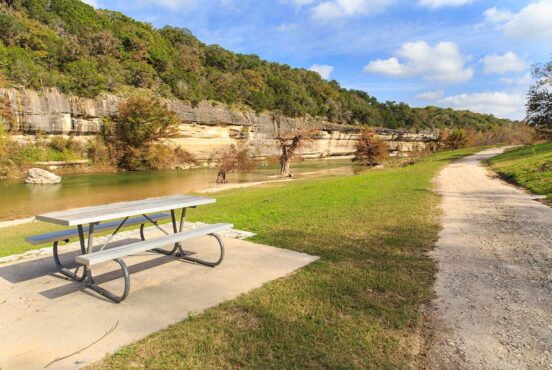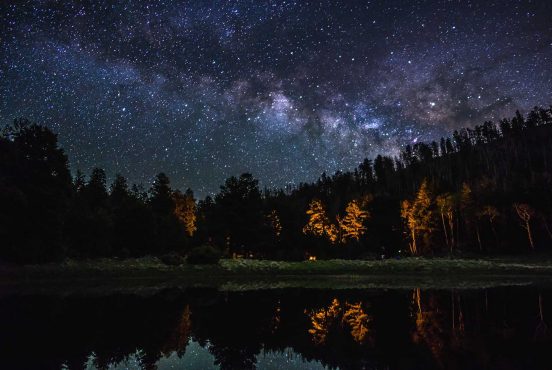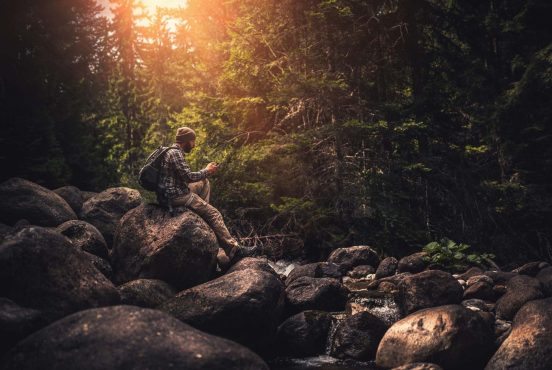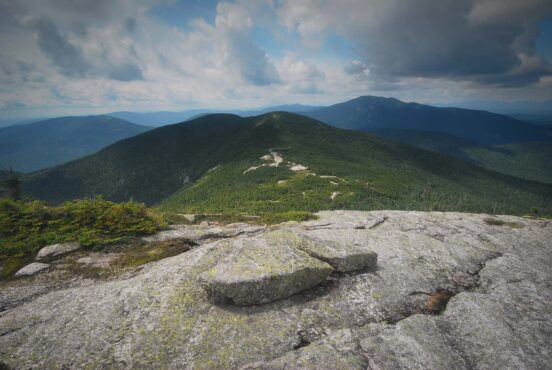Hammock camping is comfortable, lightweight, and a minimalist’s dream. If you’re interested in giving it a shot, here’s our guide to the beginner hammock camping basics.
Mention the word hammock and visions of relaxation immediately pop into mind, whether it’s a hammock stretched between two palm trees or on a frame around a backyard pool. while the gentle swaying motion lulls you into a euphoric and restful nap. However, we’re talking about hammock camping and not napping on vacation. There is perhaps no better feeling than stretching out between two trees after a long day of backpacking while listening to a flowing river or the wind dancing through the trees.
Growing up in the south, I’d never considered giving hammock camping a shot til a friend biked from the top of Alaska to the tip of South America, all while using a Hennessy Hammock. I was immediately intrigued and wanted to give it a try myself. My first foray into hammock camping was backpacking in my old stomping grounds in the Chattahoochee National Forest along the Georgia-Tennessee border over a decade ago, bringing a tent with me as backup in case of inevitable disaster. Fortunately, it worked and I still hammock camp today.
Camping in a hammock isn’t new. However, it has grown rapidly in popularity in recent years and companies have expanded their offerings to accompany the needs of this growing revolution. Want to give it a try yourself? We’ll see you in the trees.
What is hammock camping?
Hammock camping is exactly what it sounds like ditching – the traditional tent route in favor of a hammock where you’ll spend the night sleeping on air. A hammock, along with a few select accessories, can replace the need for a bulkier tent and can elevate your outdoor sleeping experience to new heights. Aside from the hammock and straps, all you need are two sturdy trees to complete your campsite.
Why you should try hammock camping
Not unlike tent camping, sleeping in a hammock has its advantages and disadvantages. Here are our top advantages for converting to hammock camping.
Portability
Hammocks are a very portable option and can be a no-brainer as they are lightweight and take up little room in your pack. Even when packing additional accessories, the weight and volume are often a fraction of space a tent requires.
Most of the portable hammocks come with their own storage and tote bag. When packed properly, the bags often have enough room to store the straps in the same bag for convenience.
Easy and Quick to Deploy
Hammocks are easy to set up. They can be a great option for a quick rest along the trail as they can be hung in a matter of minutes. They also break down just as quickly. When facing inclement weather, setting up a tarp and hammock can be far quicker than setting up a tent and rainfly. Plus, you’re already off the ground, so you’re less likely to experience a flooded tent.
Comfort
If you have tent camped long enough, you have experienced the discomfort of an ill-placed tent when a rock or tree root plagues you throughout the night, regardless of the quality or thickness of your sleeping pad. Not so with a hammock! Sleeping in a hammock is kind of like sleeping on a cloud…since you’re sleeping on air. Additionally, you don’t have to manage tent acrobatics while trying to climb in and out of the tent. With a properly hung hammock, sleeping can be extremely comfortable.
Let’s be frank: I’m in my early 50s and sometimes the ground gets uncomfortable. I can promise that getting out of a hammock in the morning is much easier than emerging after a night on the ground (regardless of the sleeping pad that you use). Plus, they are much cooler during the summer months.
The downsides of hammock camping
Just like anything in the camping world, there are tradeoffs when it comes to hammock camping. Here are a few hurdles to consider.
Hanging a Hammock Without Trees is Tough
Backpacking in an area without trees can be a real deterrent to hammock camping. This can include deserts, the high alpine, and some coastal areas. If you plan on backpacking with a hammock, do a little reconnaissance of the area before you leave your house. That way, you won’t get stuck without a bed. If you’re car camping, here’s a tip: haul a hammock stand to the campsite. That way, you don’t have to worry about a lack of trees.
Some Regions Don’t Allow Hammock Camping
Some people ruin hammock camping for everyone. There are some parts of the country where trees have been abused due to improper hammock hanging, so hammocks aren’t welcome anymore. It’s important to know ahead of time so as to not be surprised when you arrive. Also, be respectful of the area and choose your equipment carefully to maintain the long-term health of the trees.
Hammocks Are Less Roomy Than Tents
While hammocks are quick to deploy during inclement conditions, they are limited in regards to available space should you be holed up in a rainstorm. No one wants to hang in a tent through five hours of rain, but hanging in a hammock may actually be worse. If you are traveling with a hybrid group and some are in tents, they will have the advantage of more space to move around during a prolonged period.
And while there are some hammocks that claim they are for two people, that is for resting together and not for an overnight slumber. Trust me; I’ve tried.
How to Hang a Camping Hammock
Hanging a hammock properly can mean the difference between a good night of sleep and an all-out disaster. Like tent camping, site selection is key. Follow the same rules for hammock camping to limit your impact on the environment and when possible, use a pre-existing campsite.
Pro tip: Only use tree-friendly straps to preserve the integrity of the trees for future campers and their overall health.
Step 1
Select two healthy trees that are approximately 12-15 feet apart and are a minimum of 6 inches in diameter.
Step 2
Use straps that are a minimum of one-inch wide, although wider is always better. Always check the local regulations as some areas require wider straps. Wider straps cause minimal damage to trees. Attach your hammock straps high enough to create an approximate 30-degree angle towards the tree when sitting down in the center of the hammock. The lowest point of the hammock should be 12-18 inches above the ground. This provides an ideal sitting height as well as preventing serious injury should a strap break.
If it’s your first time with new gear or a new setup, it’s highly recommended to set everything up at home to become proficient at setting your hammock up and adjusting it to best suit your particular needs.
The Gear for Hammock Camping
So, what’s the best approach to procuring the right gear? There’s no right or wrong way to approach all the gear for hammock camping. Starting out with a hammock and determining if you might want to make the jump to hammock camping is a great start. Adding on accessories is easy enough after you determine if this venture is right for you. However, purchasing one of the all-in-one systems will give you the peace of mind that everything works seamlessly.
In general, you’re looking at a handful of items: a hammock, straps, underquilt, sleeping pad, a top quilt, and potentially a bug net.
Plan Your Next Big Trip
Get epic travel ideas delivered to your inbox with Weekend Wanderer, our newsletter inspiring thousands of readers every week.
Seen in: Backpacking, Camping, Camping Tips, Hammocks

